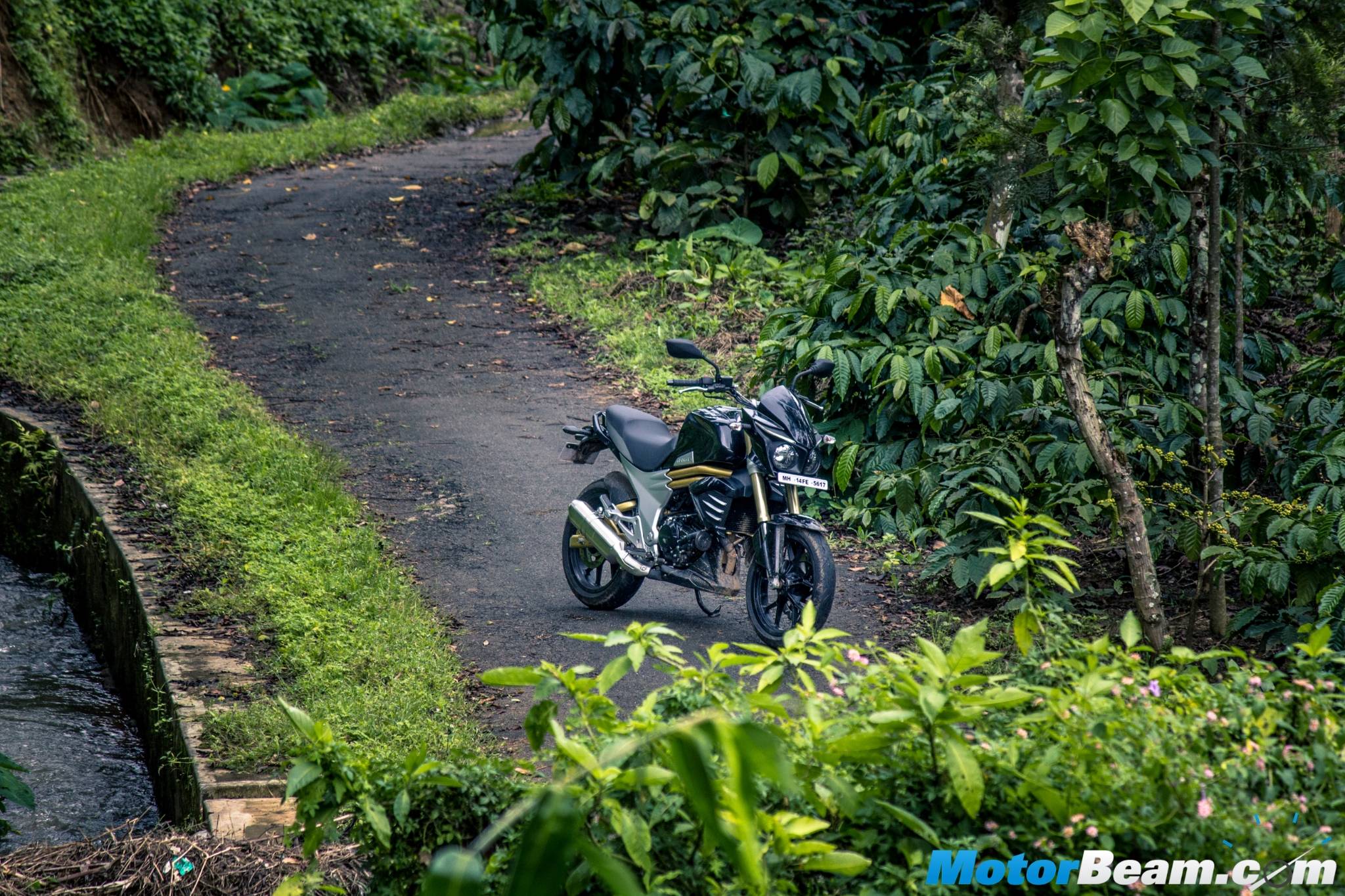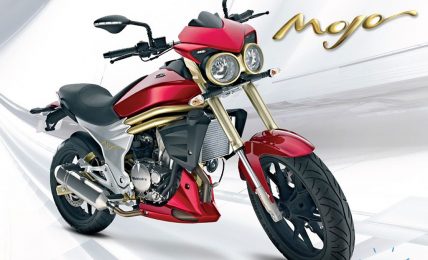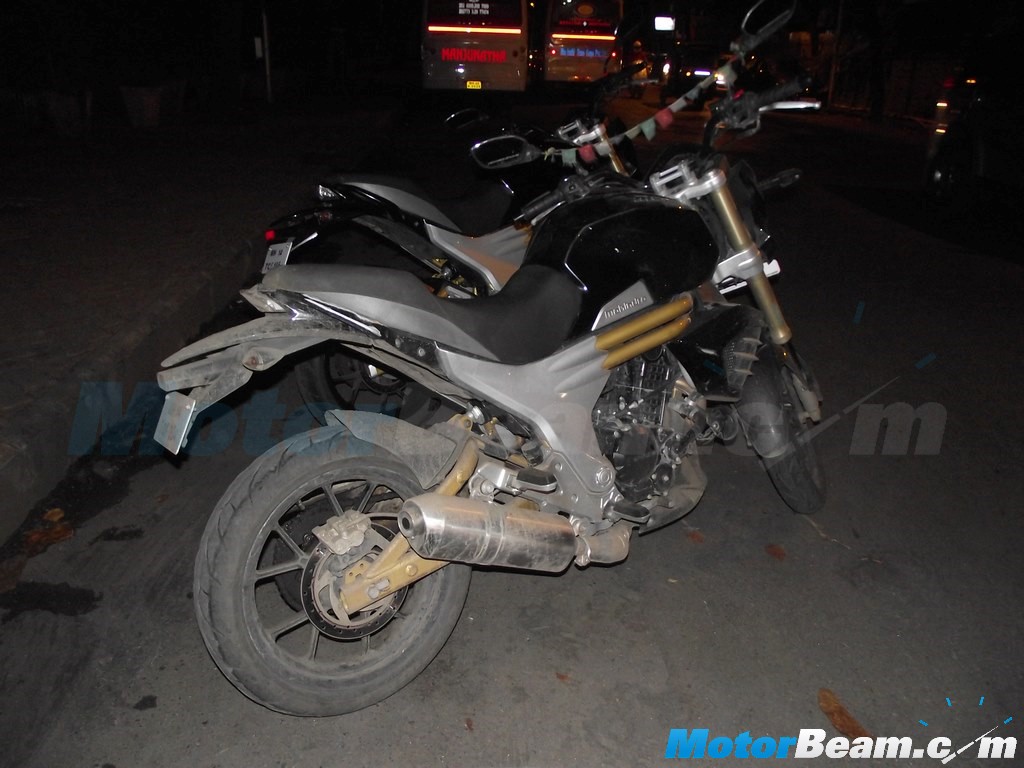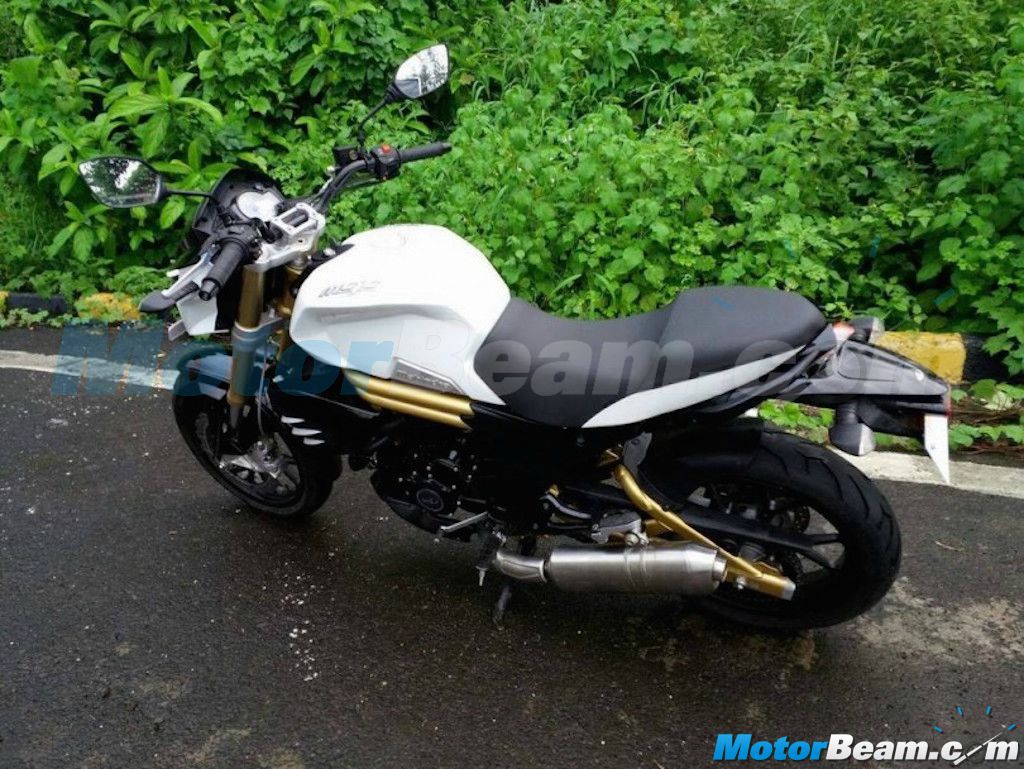
Mahindra Mojo Review
Bike Tested: 2015 Mahindra Mojo; Road Test No. 615
Price OTR Mumbai: Rs. 1,89,778/-
The Mahindra Mojo proves its worth with excellent touring capabilities, quality parts & a good engine
When Mahindra entered the two-wheeler business almost a decade ago, little was known of what lay ahead. While commuter vehicles were the obvious next step, the company very confidently showcased a 300cc offering called the Mojo in 2010 much before the segment exploded with offerings from other manufacturers. However, Mahindra was not able to capitalise on the initial hype but continued testing and constantly improving its offering for a future ready market. Now, 5 years later, the automaker is all set to launch its first premium two-wheeler which much like itself is all about keeping that spirit alive. In its case, the touring spirit! But has Mahindra missed the bus or does the market need an affordable performance tourer? With the launch not very far away, we toured from Bangalore to Coorg and back on the Mojo and 630 kms later, here is what we think about it.
Motor Quest: The Mahindra Mojo was first revealed in September 2010 as a concept, but development on the bike did not commence until 2012. The production ready Mojo has been developed with inputs from the in-house R&D team, Mahindra Research Valley team and Mahindra Racing team along with experts from Europe.
The quirky front styling on the Mahindra Mojo isn’t to everyone’s taste
Styling – The styling has been most talked about part of the Mahindra Mojo right from the start and a host of changes have been made since the first concept model came out in 2010. While some found the styling quirky and interesting, there were many that completely shunned the same. However, the production spec Mojo is very different from the concept with most elements being redesigned. In fact, almost 80 percent of the bike has been re-designed and re-engineered when compared to the concept model with only parts of the tail section and frame carried over. All said, the Mojo turns heads in its current form too with curious locals to intrigued bikers taking images of the tourer.
The Mojo looks the best in its side profile with an agile stance
The Mahindra Mojo boasts of a sturdy & consistent build quality
In its production form, the Mahindra Mojo continues to retain some of the quirky bits but the design and stance look a lot more proportionate now. The front cowl housing the twin pod headlamps does hide that Triumph Street Triple influence and gives a balanced look to the styling while the LED daytime running lights are neatly integrated and look like eyebrows. Compared to the concept, the Mojo gets conventional turn indicators flanked on either side instead of the rearview mirror integrated LEDs, while the golden coloured fat USD forks have been retained and look striking. Moving to the sides, the sculpted fuel tank lends a macho appearance to the bike and the indents helps reduce visual bulk. The 21-litre tank houses the new sharp looking ‘Mojo’ logo that Mahindra took months to come up with. We would have liked a better positioning for the ‘Mahindra’ logo on the tank since currently it has little visibility once the rider is on the saddle.
The dual exhausts are an interesting element on the Mojo, sound brilliant
Moving forward, you get all new air shrouds added below the engine (made out of metal) that work as wind deflectors and also protect the engine in case of a crash or fall. The step seat is covered in black and looks sporty while the side panels are made out of aluminium and get a brushed silver finish. At the rear, the tail section gets a smartly done LED tail light cluster with the chunky grab rails at either side while the rear mudguard holds the registration plate and turn indicators. The Mojo also comes with a healthy ground clearance of 173.5 mm which isn’t evident when you look at the bike in person but works when you negotiate nasty bumps and speed breakers without scraping the underbelly.
The fit and finish is appreciable & the Mojo feels like it is built to last
Completing the sporty quotient are elements like the engine belly pan, twin exhausts (a segment first) and funky looking multi-spoke alloy wheels. While our test bike with the exposed golden twin tube frame may not appeal to everyone but it creates a nice contrast with the black/white colour on which it is available. In addition, due credit needs to be given to the immaculate fit and finish and strong build quality on the Mahindra Mojo with even the paint quality looking good. Attention to detail is impressive with all lose wires getting a heat wrap and steel-braided brake lines, both of which are missing on the almost three times more expensive Harley-Davidson Street 750.
The instrument console is loaded with information & is easy to read
Instrument Cluster and Switchgear – If you’ve loved the loaded instrument cluster on KTM bikes, the unit on the Mahindra Mojo is pretty much up your alley and comes with a lot of tech to play with. The cluster comprises of an analog tachometer and a digital display unit with all the other tell-tale lights located on the left corner comprising of the malfunction indicator, neutral light and turn indicator while the high engine temperature light sits below the tachometer. There is also an indicator located on the top right corner which lights up when the rev-limiter kicks in. Switch on the ignition and the tachometer needle does a full sweep with all the other lights lighting up as well. The Mojo also gets a LED guided RPM indicator (segment first) that stays lit up for a couple of seconds at the respective RPM figure once the rider changes the gear and helps determine if the gear shift was done at the right time or not.
The race mode helps calculate the 0-100 km/hr time and 500 metres time too
The instrument cluster’s race related functions are for the performance loving motorcycle enthusiasts
The digital display is an extremely loaded unit and gets divided into two parts. The standard display incorporates the clock, speedometer, odometer, two trip meters, fuel level indicator and top speed recorder. Move to the race mode (done by pressing the two lower buttons together for a second) and the unit will give you access to the 0-100 km/hr timer and the 500 metre timer. While both these features wouldn’t be used on a day-to-day basis, they are meant for the weekend fun which is the Mojo’s main purpose. Talking about the switchgear, the Mojo gets back-lit switches that exude a rich appearance at night while the overall plastic quality is top notch. You do feel the switches will last a lifetime.
The upright riding position is spot on, very comfortable over long distances
Ergonomics – The Mahindra Mojo scores brownie points with its near perfect riding posture and folks of all sizes will find it comfortable. The upright seating posture, centre-set aluminium foot pegs and raised handlebar make for an extremely comfortable riding position and you easily adapt to the same within minutes of commencing your ride. Tall riders will be appreciative of the Mojo as the 814 mm seat height very comfortably accommodates the rider while the carved out fuel tank sides provide enough space for the thighs. The single seat is wide and well cushioned with the step up pillion seat helping support the rider’s hip. On the downside, the contoured rear seat is uncomfortably small for the pillion and is best suited for ferrying someone over short distances. The other minor ergonomic issue we noticed was the side stand that hides below the left side exhaust pipes and needs getting used to.
Power delivery is linear throughout the rev range, mid range is the Mojo’s forte
Performance – Addressing the elephant in the room, the engine was quite a revelation more so since we weren’t sure on what to expect given the 5 year wait. Now, it would be safe to say that Mahindra has fine tuned the motor really well. The liquid-cooled, 4-stroke, 295cc single-cylinder engine with closed loop fuel injection produces 28 PS at 8000 RPM and a peak torque of 30 Nm is available at 5500 RPM. With torque being the USP here, the unit is amazingly refined being vibe free for the most part while you do feel a bit of vibes when you hit the redline. Surprisingly, the motor weighs just 35 kgs and is lighter than the KTM Duke 200’s unit that weighs around 37 kgs. Even with a touring image, the Mojo is no slouch and boasts of some healthy performance figures with 0-100 km/hr coming up in under 10 seconds whereas a top speed in excess of 150 km/hr is possible but requires you to duck down completely while riding on an expansive empty stretch. Heating is not an issue on the Mojo and even if temperatures do rise, nothing is felt on the rider’s legs.
The engine boasts of excellent NVH levels, runs very cool too
Though power delivery is linear, the Mojo boasts of impressive performance figures with 0-100 km/hr coming in under 10 seconds
The Mahindra Mojo isn’t as aggressive as the KTM Duke or even the Honda CBR250R for that matter, nor is it as relaxed as the Royal Enfield Thunderbird 350 and it is this character that will help the bike differentiate itself in the segment. The motor is tuned for a composed response and gets a laid back style with power readily available throughout the rev range. The engine idles at 1500 RPM and performance is recognisable a shade above 4000 RPM which is when you see the numbers on the digital speedometer climbing real fast as you move towards the 9000 RPM redline. Push hard and you feel a slight bump in power post the 5500 RPM mark when maximum torque is delivered and the motor feels the happiest uptil 7000 RPM. The mid-range is the Mojo’s strongest suit and the power rush is something every tourer will love. Coming to the 6-speed gearbox, the unit is a slick shifting unit and responds well to inputs with multiple downshifts being a bit tricky.
Power is available throughout the rev range, you can do 50 km/hr in 6th gear
The beauty of the Mahindra Mojo also lays in the fact that you can do 45-50 km/hr in sixth gear and the engine won’t knock or show signs of stress. Thus, moving in higher gears within the city isn’t an issue. You don’t feel any strain on the engine even while doing triple digit speeds with 100 km/hr coming up at a little over 5500 RPM in top gear. Comfortable cruising speeds is in the vicinity of 110-120 km/hr with the rev needle around 6500 RPM and the Mojo feels quite at home there. Despite the higher torque output, the tourer does not get a jerky start thanks to the slipper torque mechanism and newer riders upgrading to the bike will find it easier to adjust to the larger displacement unit.
Despite triple digit cruising speeds, the Mojo returned a respectable 30-35 km/l
We are particularly impressed by the high-speed stability of the Mahindra Mojo courtesy of the long wheelbase and the bike manages to remain confident on the straight tarmac laden highways as well as the pristine corners in the hills. The hefty weight also helps the bike stay planted as we experienced some nasty crosswinds during our ride. While the front-end does sway a bit at speeds over 130 km/hr, the rider seldom feels out of control. Throughout our time with the bike, we were happily cruising at an average speed of around 110 km/hr and the motorcycle still managed to return a fuel efficiency figure of around 32 km/l, making for a 600 km touring range on a single tank. The twin exhausts on the Mojo though add to the weight, do complete justice to the engine and offer an incredibly likeable exhaust note. It also comes with dB killers that can be removed for a more bassy aural experience.
The Mahindra Mojo boasts of a sophisticated & well tuned suspension
Riding Dynamics – Given our long ride astride the Mahindra Mojo, we have no qualms in saying that it is an excellent touring machine. It feels nimble on the longest of stretches and the sophisticated suspension setup comprising of 80 mm USD front forks and an off-set pre-load adjustable monoshock at the rear has been tuned for rider comfort and absorbs most of the undulations with only the most brutal bumps being passed on. That said, the front heavy nature of the bike does take some of the fun away and doing a knee down although possible will take a lot of confidence and skill on the part of the rider. In city limits too, the street-fighter isn’t very slick and takes some effort to negotiate in traffic situations till you are used to the bike. The 165 kgs of dry weight also makes U-turns bothersome, especially at a stand still.
The front brake lacks initial bite, tuned for progressive braking
The sticky Pirelli tyres offer more confidence while cornering hard
Also inconvenient while touring is the wind blast at triple digit speeds, mostly above 115 km/hr which does rob some fun. The issue can easily be countered with a taller aftermarket windscreen keeping things in control. A special mention must go to those overwhelmingly capable Pirelli Diablo Rosso II radial tyres that take the Mojo riding experience to a new level. The rubber is extremely effective in providing traction, allowing you to push the motorcycle further and provides the needed confidence to attack corners. We were riding the Mojo on rain-drenched roads around the ghat section and could barely tell the difference thanks to the impeccable grip coming from the Italian rubber.
The sticky Pirelli tyres take the Mojo’s riding experience to a whole new level
A sore point remains the braking on the Mahindra Mojo. The tourer gets the largest front brake in the segment with a 320 mm petal disc up front with a radial calliper and four pistons, while the rear gets a 240 mm disc with a floating calliper and two pistons sourced and tuned by J.Juan of Spain. Despite the segment best figures, the front brake leaves you a bit disappointed as it lacks initial bite while the rear is the exact opposite being feedback rich. Mahindra calls it progressive braking so that newer riders do not lock up the front wheel during panic braking. Hence, it is best to find the right balance between the front and rear brakes and when done, the bike sheds speeds dramatically fast and things are very much under control courtesy of the sticky Pirelli rubber. ABS will be offered on the bike in the near future.
While ABS is in the pipeline, there are other safety aids too
Safety and After Sales Service – Mahindra has incorporated several electronic aids to make things easier on long tours. You get the limp home mode that protects the engine from dying in case of a mechanical fault by limiting the motor from not being revved beyond 5000 RPM. You also get a RPM limit indicator and roll over sensor with the latter turning the engine off if it detects that the bike has tilted beyond 45-degrees. As a safety feature, the clutch needs to be depressed even in neutral when starting the engine. The Mojo isn’t getting ABS at launch, but Mahindra has promised us of the same being under testing and it will be introduced in the near future. Talking about after sales service, Mahindra has limited outlets when it comes to its two-wheelers but it is expanding its network across the country. They will be identifying key touring routes to provide basic servicing along the route. Also, a 24×7 call centre has been established to assist riders in emergency situations and breakdowns. Meanwhile, the automaker’s existing dealerships will have a Mojo lounge with a dedicated space for the bike while customers will interact with a Mojo relationship manager who will be the one point contact right from sales to service needs.
The Mojo’s strong cruising character will attract genuine touring enthusiasts
Verdict – Mahindra deserves a pat on their back for the Mojo. While the world ridiculed at the never-ending development period of the tourer, the automaker has made each of those days worth it with an extremely potent final product that turns out to be on par with the competition and better in many ways. While the Mahindra Mojo may not be the best thing invented post bread, it makes for a striking point of what the manufacturer is capable of. The bike turns out to be a mature offering on this side of the Rs. 2 lakh mark and isn’t another me-too product. Look past the quirky styling and the attributes like the massive fuel tank, comfortable riding position, loaded tech wizardry and a responsive engine work very much in the bike’s favour. Success of this Indian touring machine will totally depend on how the product is accepted by bikers in the initial days of launch.
The Mahindra Mojo is a healthy amalgamation of two different segments coming together as the relaxed riding position makes it apt for long distances while the splendid performance keeps the adrenaline rush seeking riders happy.
The Mojo offers a great balance between performance & comfort which is a rarity
What’s Cool
* The quirky design stands out making more heads turn
* The massive 21-litre fuel tank makes for a healthy 600 km travel range
* Pirelli Diablo Rosso II tyres offer exceptional grip
* The riding position is spot on and makes long distance touring hassle free
What’s Not So Cool
* Reliability and cost of maintenance is still to be determined
* The front brake misses out on initial bite and feedback
* The heavy front makes manoeuvring the bike in city traffic difficult
Alternatives – KTM Duke 200, Honda CBR250R, Royal Enfield Thunderbird 500, Benelli TNT 25
The Mojo showcases Mahindra’s tech prowess and its zeal to develop good products
Mahindra Mojo Specifications
* Engine: 295cc, single-cylinder, liquid-cooled, 4-valve, DOHC
* Bore x Stroke: 76 mm x 65 mm
* Power: 28 PS @ 8000 RPM
* Torque: 30 Nm @ 5500 RPM
* Transmission: 6-speed
* 0-100 km/hr: 9.48 seconds
* Top Speed: 155 km/hr
* Fuel Consumption: 30-35 km/l
* Fuel Type: Petrol
* Frame: Twin-Tube
* Suspension: 80 mm USD Forks With 143 mm Travel (Front), Offset Monoshock (Rear)
* Tyres: 110/70/ZR17 (Front), 150/60/ZR17 (Rear), Pirelli Diablo Rosso II
* Brakes: 320 mm Disc (Front), 240 mm Disc (Rear)
Mahindra Mojo Dimensions
* Length x Width x Height: 2100 mm x 800 mm x 1165.5 mm
* Wheelbase: 1465 mm
* Ground Clearance: 173.5 mm
* Fuel Tank Capacity: 21-litres
* Kerb Weight: 183 kgs
Testers’ Note:
Picture Editing – Sri Manikanta Achanta
Further Reading –
Mahindra Mojo Video Review
Mahindra Mojo First Ride Review
Mahindra Mojo vs KTM Duke 200
Catch All The Latest Videos, Subscribe To




